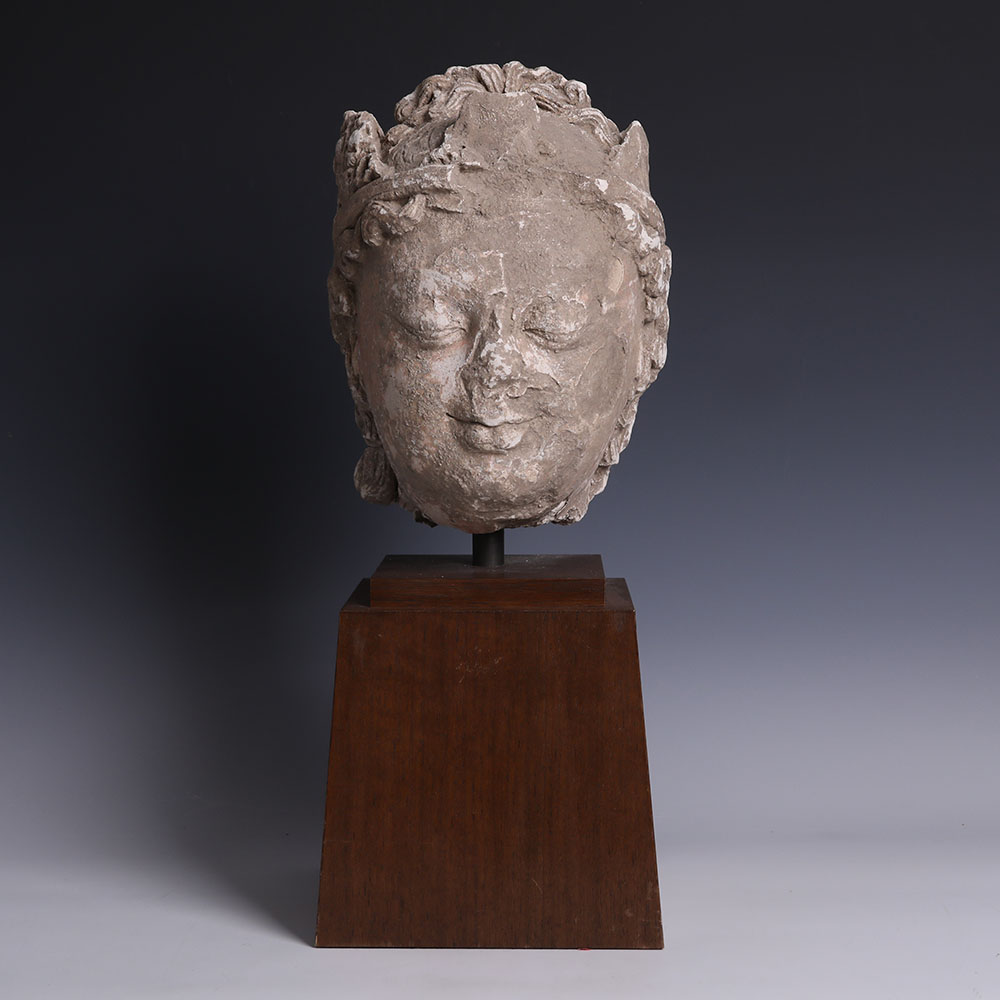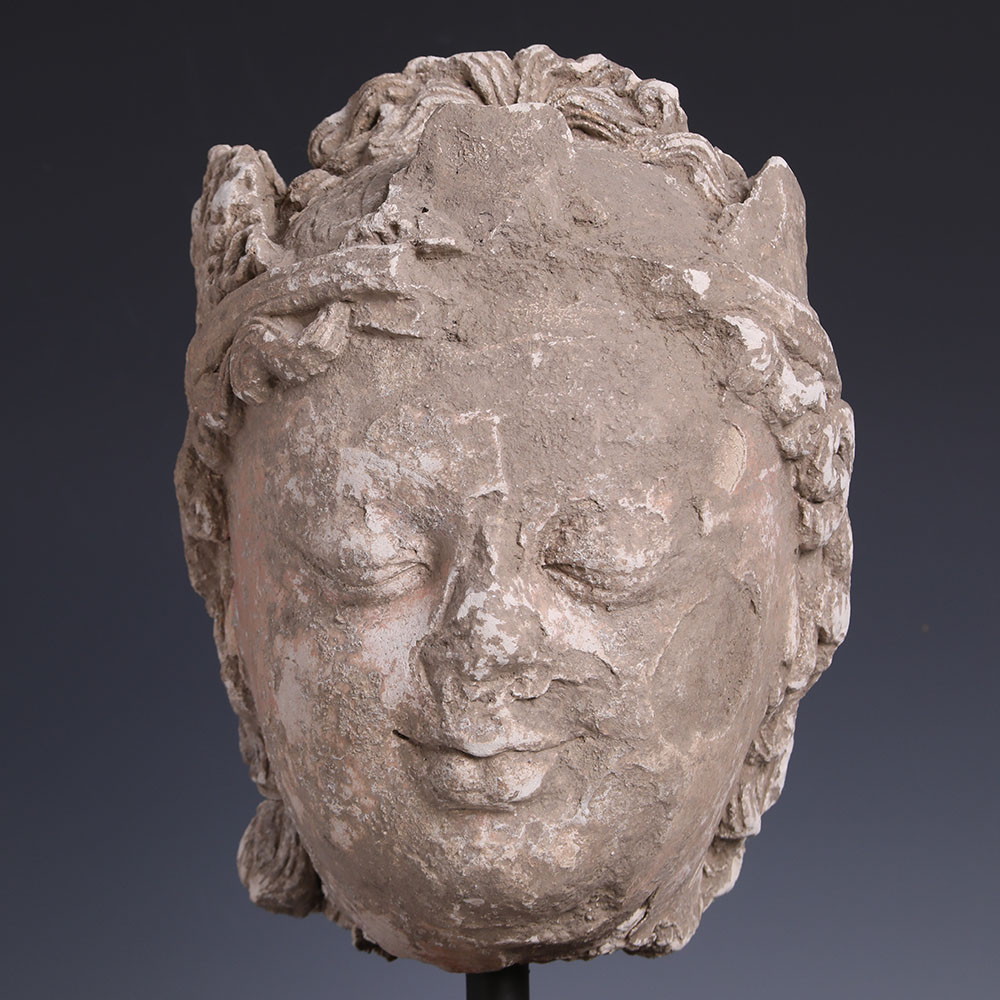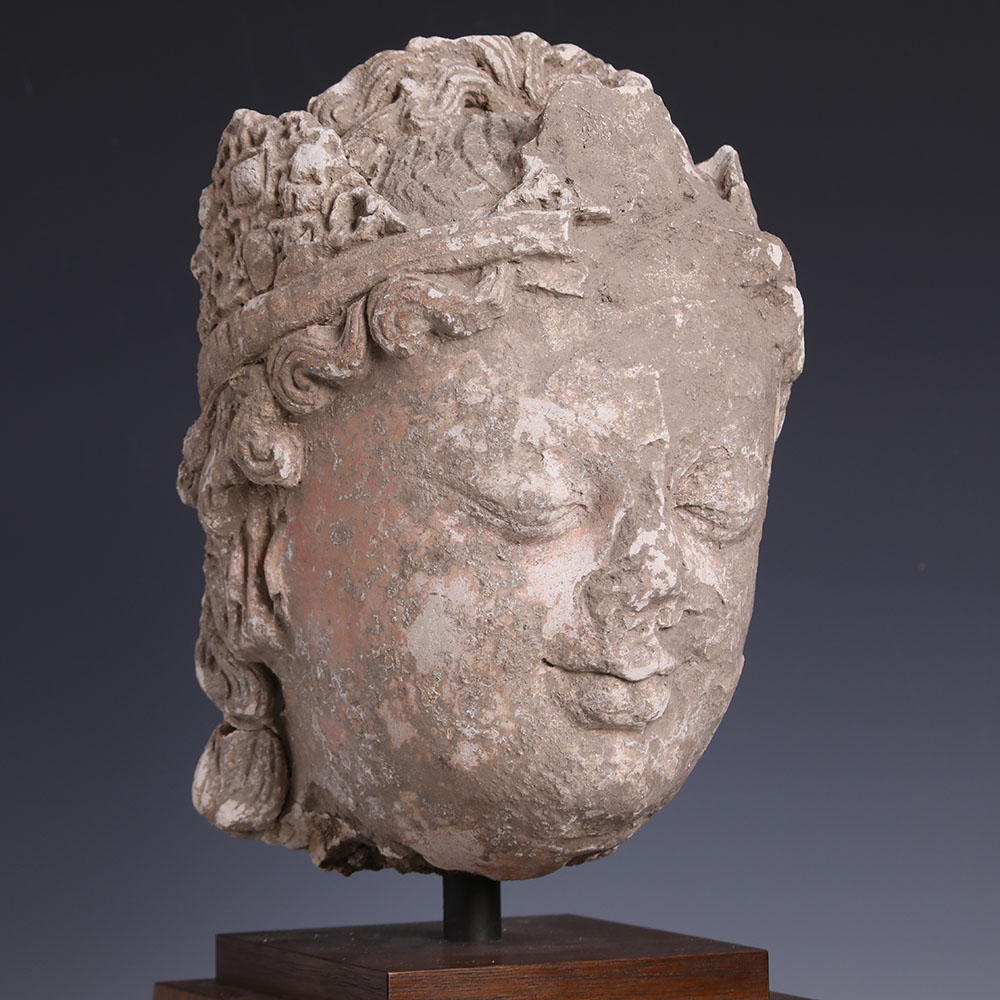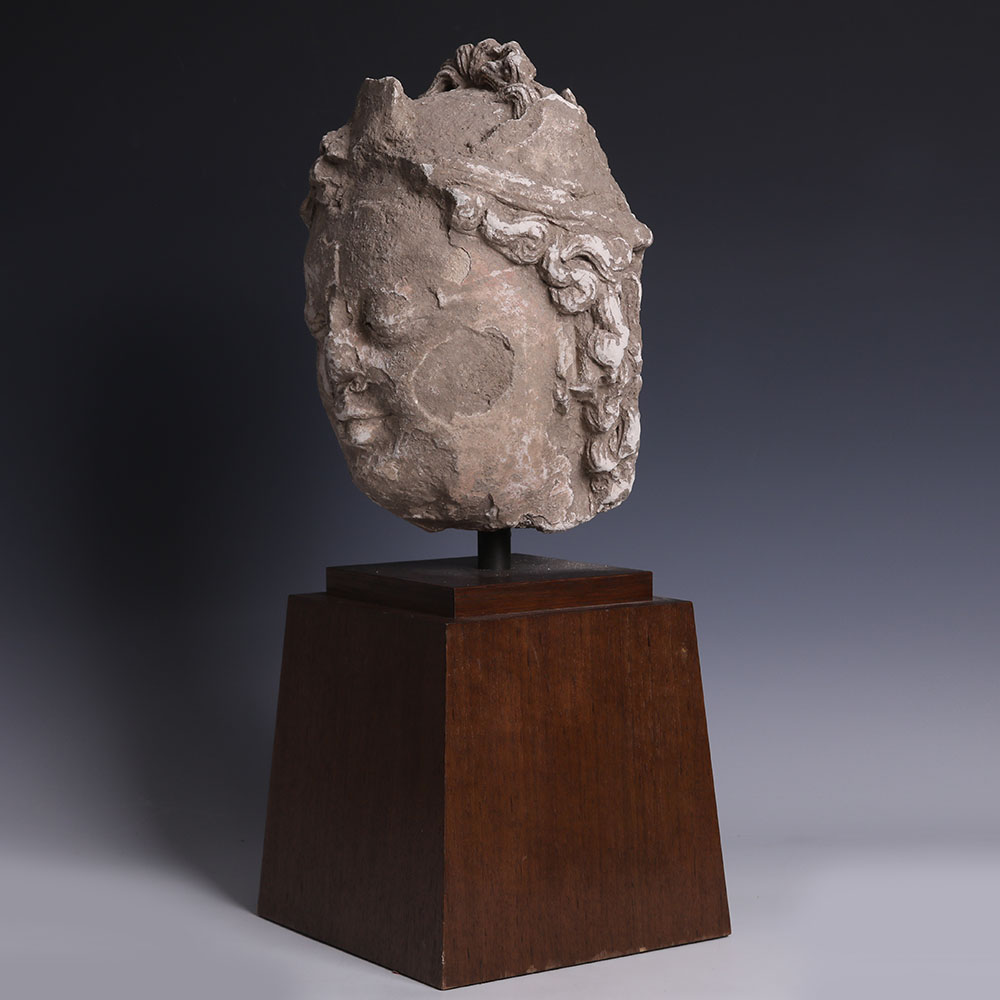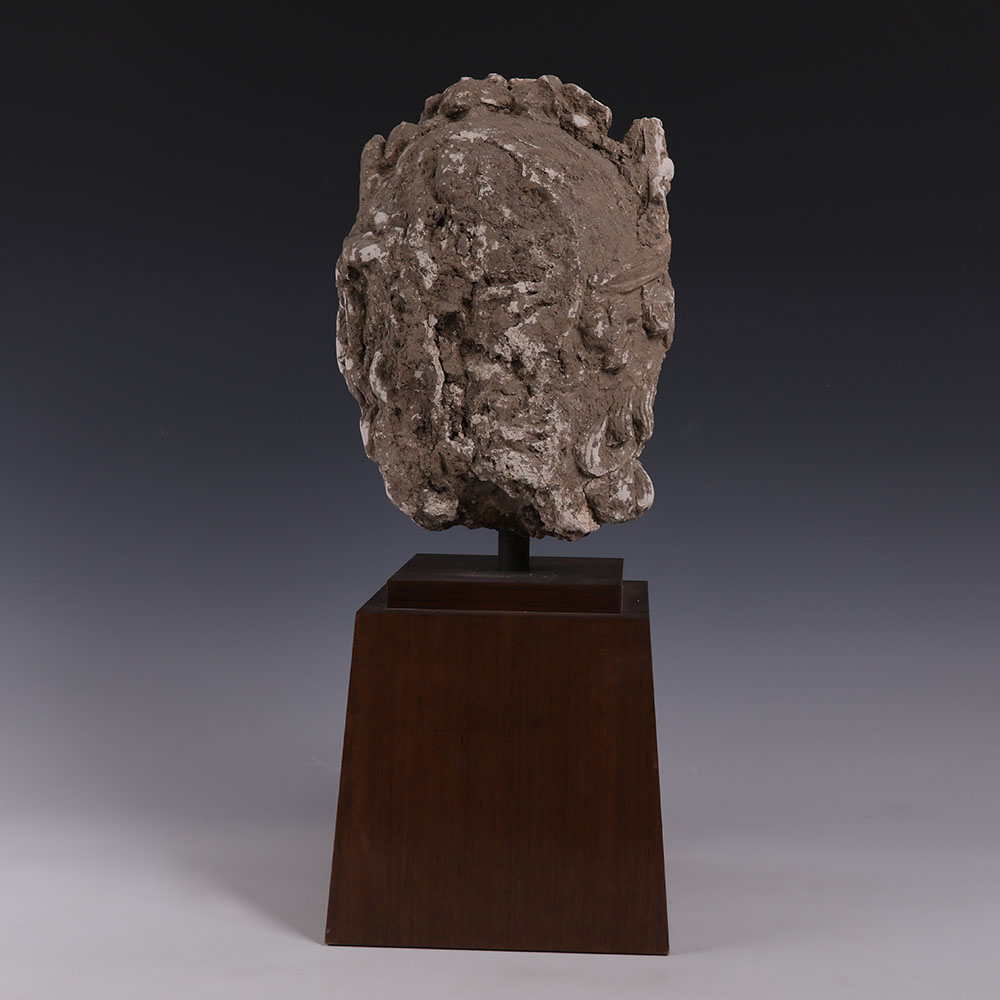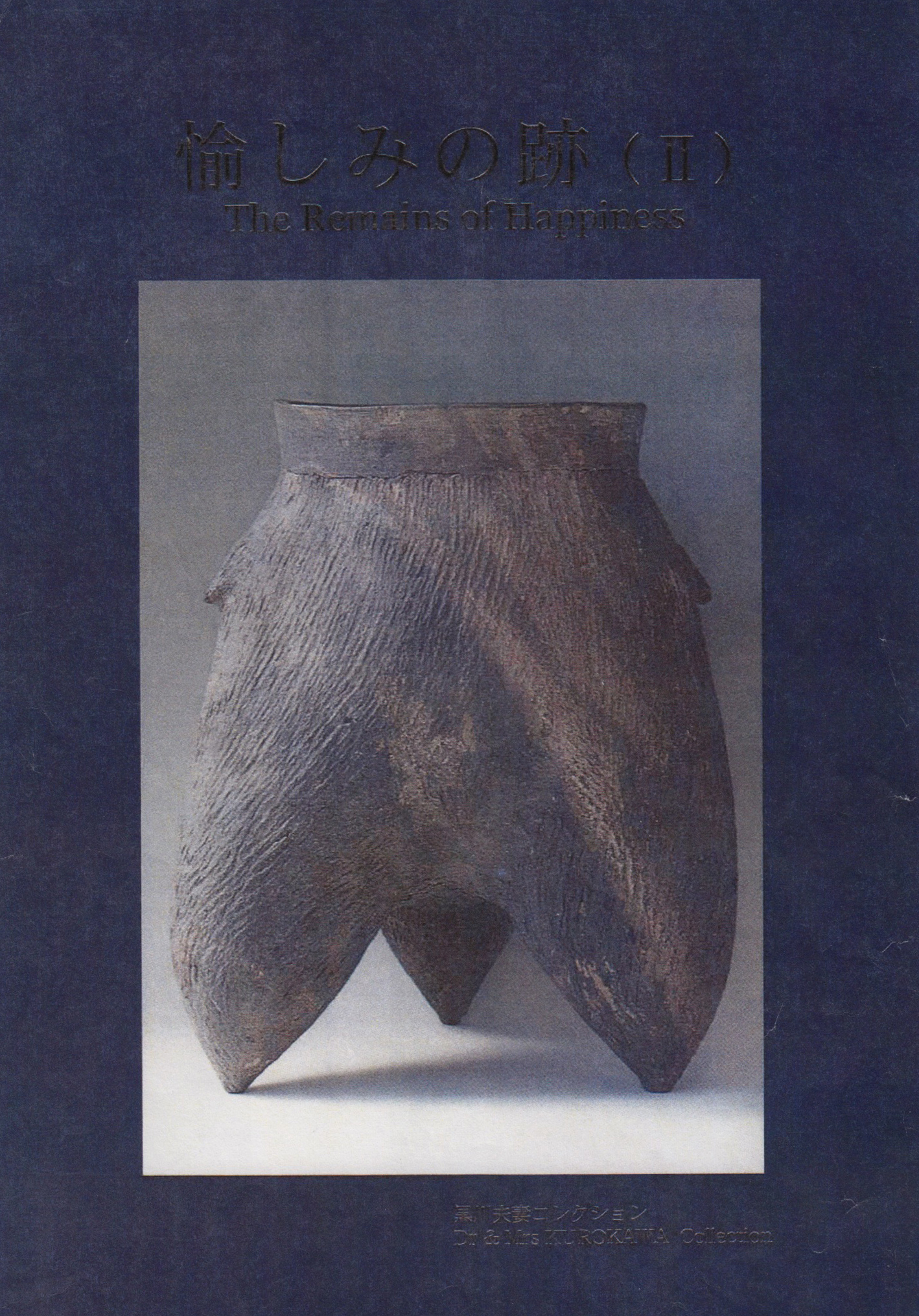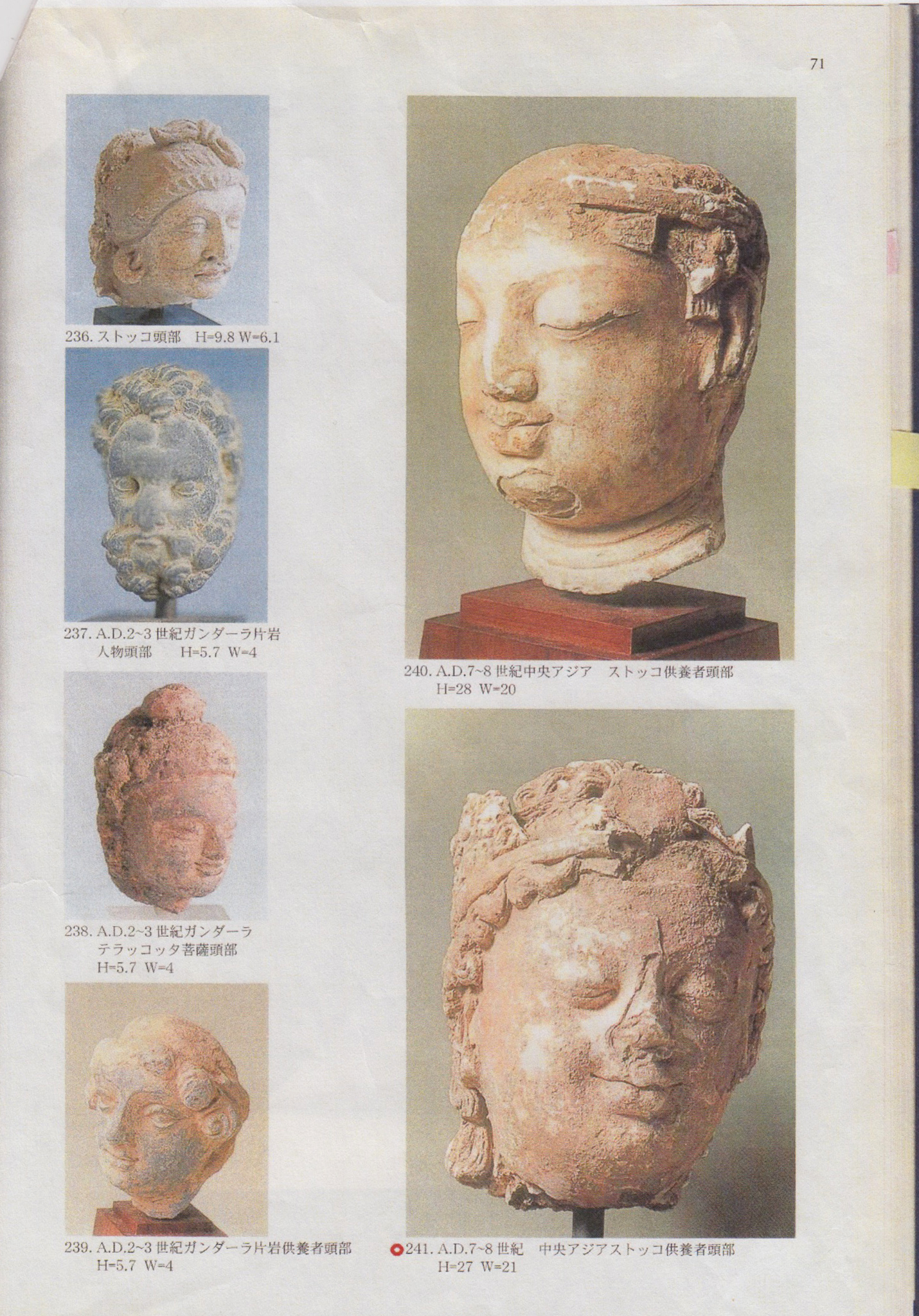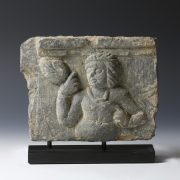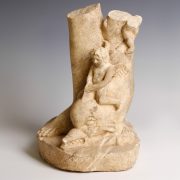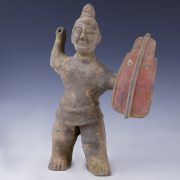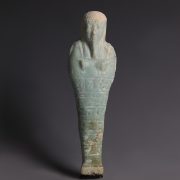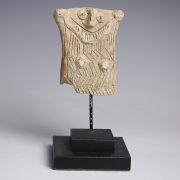This piece is a depiction of the compassionate and merciful bodhisattva Avalokiteshvara, who embodies the compassion of all Buddhas. Bodhisattvas accomplish all but the final meditation leading to full enlightenment. They are considered so advanced in their practice and realization that they have the ability to control their rebirth and act in righteous and compassionate ways, to help others achieve enlightenment. Across cultures Avalokiteshvara is depicted as both a man and a woman. The name translates as ‘lord who gazes down [at the world]’. The latter part is implied rather than stated fully.
A Central Asian Chinese Fragmentary Grey Stucco Bodhisattva Head
$3,650.18
A large grey stucco Bodhisattva head displaying an iconic relaxed expression through exquisitely carved facial features, which are distinctively known to the glyphic artistry of Central Asia Chinese style from the 4th century AD. He is portrayed with heavy lidded almond-shaped eyes, his gaze lowered in meditation, a straight, pyramidal-nose and a bow-shaped mouth recessed at the corners, turning his sincere facial expression into a gentle smile. His hair is arranged in delicate wavy strands with the curled hair locks neatly arranged along the contour of his forehead, enhancing the naturalistic appeal of his representation. The Bodhisattva’s turban and decorative features imply that the head is possibly a rare image of Shakyamuni (Gautama Buddha, regarded as the founder of Buddhism) prior to his enlightenment. The piece may have alternatively been part of a triad of such figures.
This Bodhisattva head is mounted on a customised stand.
Provenance: From an old Tokyo collection; previously the property of a Japanese gentleman since the late 1990s, accompanied by copies of the relevant pages as published in the Remains of Happiness. The Dr.& Mrs Kurokawa Collection, vol 2.2001p.71 no. 241
Condition: Fine condition, with light pinkish pigment remain visible to the surface, some cracks and chips to the nose.
In stock
| Weight | 8101 g |
|---|---|
| Dimensions | W 22.2 x H 47.5 cm |
| Chinese Ideology | |
| Culture | |
| Region |
